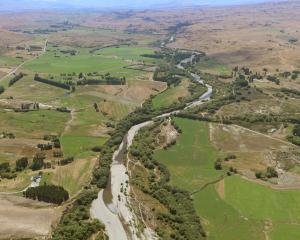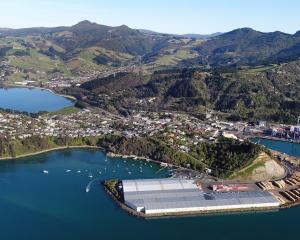A Dunedin man is concerned Otago residents are not aware of a fault off the coast which could have an impact as great as the Alpine Fault in an earthquake.
However, GNS Science says the fault is known but is considered inactive.
After the recent earthquakes in Christchurch and north through to Wellington, Middlemarch man Phil Ford started to think about the anomaly he saw in maps of the sea floor off the east coast of the South Island.
He is a University of Otago PhD student, and although it was not the topic of his research, he looked closer at the sea-floor maps, coming to the conclusion there was a fault running along the edge of the continental shelf off the east coast people should be aware of.
''If this is active, it is much more important to the east coast of the South Island.''
He was not aware it had been mapped as the Waipounamu fault.
Its close proximity to the east coast - about 30km from Otago Peninsula - meant there was a real tsunami risk, he believed.
''People should be aware.''
While it might not be considered active by GNS, he believed its distinct edge, which had not been ''muted'' by sedimentation over time, meant there was a possibility it could be active but more research was needed to determine that.
Christchurch's experience showed inactive or unknown faults could cause major damage, he said.
He had written a paper that was yet to be peer-reviewed or published to highlight the risk and hoped others would investigate the fault.
''More work and a better scientific understanding is now crucial. Further evaluation of the fault should put it more reliably into a broad understanding of seismic hazards facing the various communities of the eastern South Island.''
GNS Science communications manager John Callan said the fault, or belt of faults, was first proposed in the 1970s and the evidence was based mainly on the shape of the sea floor.
''The fault, or faults, are not regarded as active and are not thought to have not ruptured or produced earthquakes for about 100,000 years.''
A GNS scientist produced a map in mid-2000 naming it the Waipounamu fault.
It was not one of the 550 onshore and offshore faults in the New Zealand Active Faults Database, he said.
Otago Regional Council environmental engineering and natural hazards director Gavin Palmer said the council's 2005 commissioned report on seismic hazards did not include risks posed by off-shore faults.
However, this year the council would be updating that report and collating all available information on seismic hazards for Otago.
That information would be assessed to see if more research needed to be done or response made to a hazard.
Suitable information would be incorporated into the council's natural hazards database, which was available to the public online.
Niwa declined to comment on Mr Ford's paper until it had been peer-reviewed in a scientific journal.












